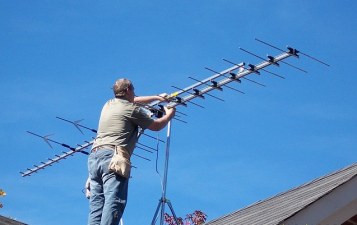Broadcast Television Making a Comeback?

Boxee recently caused a stir when it joined forces with the Consumer Electronics Association in petitioning the FCC to continue to force cable providers to offer unencrypted basic tier service, but perhaps the company should have been petitioning Congress not to approve the sale of TV spectrum. A recent report in the Wall Street Journal combines some Nielsen figures concerning cord cutters and anecdotal retail evidence of rising antenna sales to suggest that broadcast TV viewership is making a comeback. The anecdotal evidence comes via a seller in St. Louis who specializes in TV antennas who is projecting to double his 2011 sales to 1.2M antennas after years of rising sales. At the same time, Nielsen is reporting that the number of Americans with wired broadband and broadcast TV only has risen to 5.1M as of the third quarter of 2011. Put it all together and paint with some broad strokes, and it would appear that the cable companies might be in danger of cord cutting going mainstream. This would be good news for Aereo, Barry Diller’s new startup predicated on fusing broadcast TV with web streaming, though Comcast’s recent good news might indicate that an improving economy is all the cable companies need to regain their momentum. Are cord cutters the vanguard, or destined to remain a niche?
The average monthly bills for basic cable service and broadband service add up $91.44, before add-ons like high definition and premium channels, according to SNL Kagan. By sacrificing basic-cable channels, and signing up for Netflix Inc., a household could pay less than $48 per month.

Rising antenna sales doesn’t
Rising antenna sales doesn’t mean cord cutting is on the rise. It only means demand for antennas has been rising. Just because someone needs an antenna doesn’t mean they cut the cord.
I also find Nielsen’s figures misleading. They make the figures out to be an indication of cord cutting, but the growth that they are reporting is not matched by an equal loss of customers in the pay TV industry. This indicates to me that the growth isn’t coming from pay TV cancellations. It’s coming from people that didn’t have pay TV service to begin with. Which means the growth is due to people signing up for new broadband internet service….people that previously relied on an antenna and didn’t have broadband internet service.
This may also have to do with
This may also have to do with the economy and people trying to save money any way they can. When cable first came to my neighborhood, my father was first in line because our local reception was a terrible. He just wanted a clear picture on the local channels, he didn’t and still doesn’t really care about any extra cable networks (there weren’t any back then) but he was willing to pony up the money for a clearer picture. So, if there exists a significant amount of viewers like this that just want a clear static and ghost free picture on their local channels, then the digital mandate may just have helped them. Invest $100-$200 for a good antenna and some coax (more if you’re having it installed) and a relatively new TV, and no more paying for local TV.